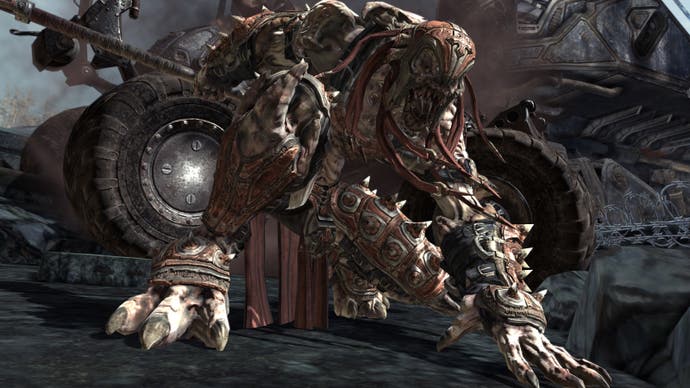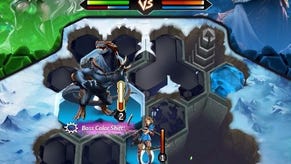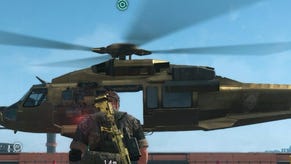Gears of War 2
The next day of the Locust.
Gears of War is what people who don't play videogames probably think all videogames look like. Meaty, rubble-strewn and dribbling splatter, its soldiers-versus-lizards storyline suggests entertainment of the direct-to-DVD kind, where characters are little more than a means to an explosion and the only brains are smeared across a wall.
That's how Gears looks, certainly, but how it plays is a different matter. Rather than an eye-bleeding Unreal-alike or an all-night pass to the local offal house, Epic's game moves at its own distinctive pace. Each level is a carefully-constructed maze of cover that will confound anyone bent on mindless blasting, while the weapon-set balances every strength with an equal and opposite weakness elsewhere.
With a template this solid, you could almost forgive the developers for approaching a follow-up as nothing more than a chance to churn out a handful of new maps and the odd one-liner to keep things moving along. But having had a chance to play through the first act of November's sequel, it seems the Gears team are a long way from running out of new ideas.
Don't worry, though: if all you're after is fresh heads to stamp on, you'll be fine. In fact, Gears 2 now even provides you with three different flavours of fatality mapped to the face buttons, along with the option to use a downed enemy as portable cover. But for those who want more, the team has also made attempts to vary the action and, in multiplayer, even experiment.
Gears 2 takes place six months after the first game, and the narrative focuses on the fight to save the city of Jacinto from destruction at the hands of the Locust. On paper, the first act kicks off with a fire-fight through an inner-city hospital before speeding on, past a suitably neo-Nazi battle speech, to mountainous countryside, where you're on a mission to take the fight underground to the Locust's enclave.
In reality this simple agenda quickly becomes a whirlwind of clever variation, with the tempo and objectives switching from one minute to the next. It's clear that aside from the prettiness and increased on-screen body count it's the pacing that has gone through the biggest overhaul this time around, and the results so far are extremely promising.

The initial hospital battle is an exercise in controlled chaos, swinging from higher-ground sniping points to more intimate slaughter on the fly as I bumble through the corridors, playing co-op with a nice fellow who manages to hide his annoyance as I stop to scribble down notes in the middle of crucial battles. (Controversially, Gears 2 will retain the two-player co-op limit of the original.)
While there are scripted moments, such as conveniently placed explosive barrels or the brilliantly comic sight of two locusts popping up from behind a reception desk, the environments are just large enough to allow for experimentation in most encounters. Courtyard corridors are built for flanking and there are a range of cover options available at every turn, with each choice subtly altering the way the carnage plays out.
On top of this are the moments of sheer adrenaline, which show that Epic's approach to set-pieces has been significantly refined. Whether it's the downed Raven crashing through a skylight, or the electricity cutting out as Locusts start to converge from all sides and the ammo runs low, you are never entirely sure what's around the next corner - and the variety never descends into gimmickry.
Although the action remains fairly small scale - a bloodied mess of chainsawed torsos, close-combat gunfire, and kerb-stomping - there's a greater sense of the war going on around you this time, from the Reavers strafing ground troops glimpsed out of the dirty glass of the hospital windows, to a brief trip through rubble-choked streets, while distant - and not so distant - chaos erupts all around.

And when the game moves into the wilderness, this sense of scale increases. While the shift from plodding through corridors to riding on the backs of huge mobile assault derricks seems like you might be in for little more than a clockwork crawl through an elaborate shooting gallery, the mechanics are well hidden for the most part and you rarely feel like you're being unfairly railroaded.
There are boarding Locusts to fight off in the confined space of the derrick itself alongside occasional pit-stops to dismount while an NPC patches a fault, regularly shunting events back to more traditional control-and-flank gameplay. Elsewhere, enemies - previously restricted to a mere handful on screen at any time - swarm out of the ground in dizzying numbers. To make up for the lack of Brumak action in the original game, Gears 2 is now practically tripping over them as they break through the trees and topple boulders.
















